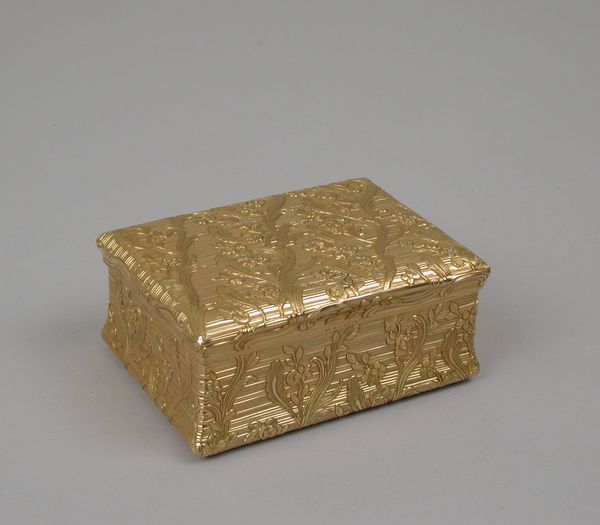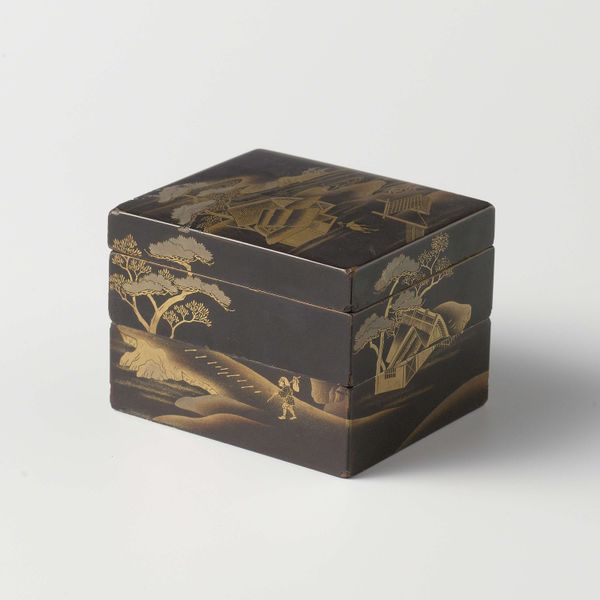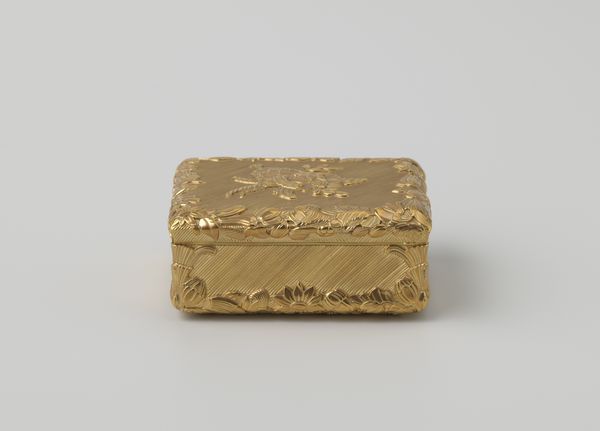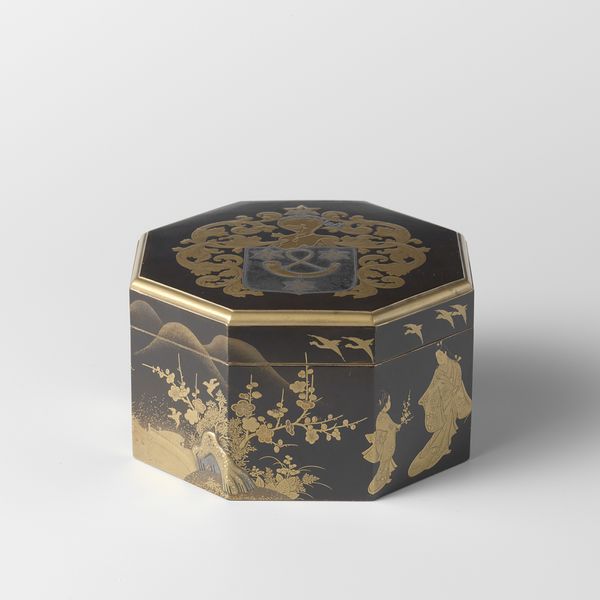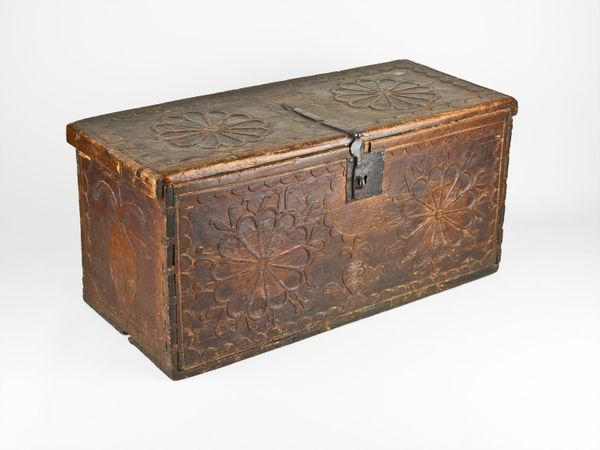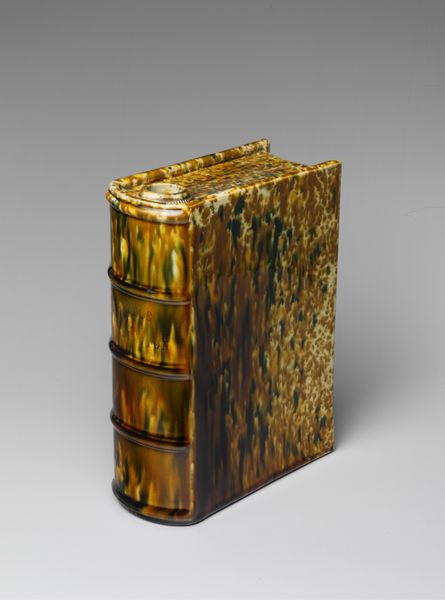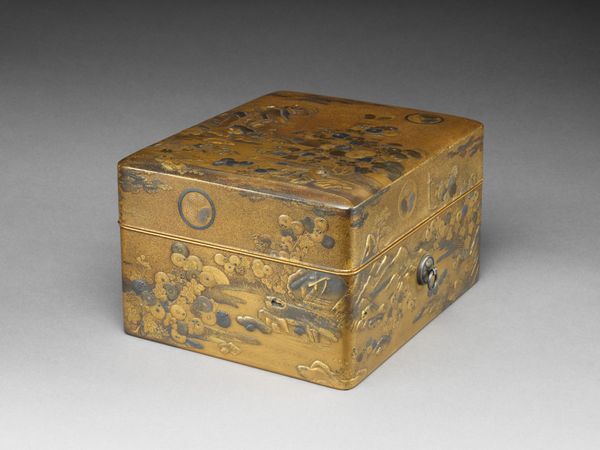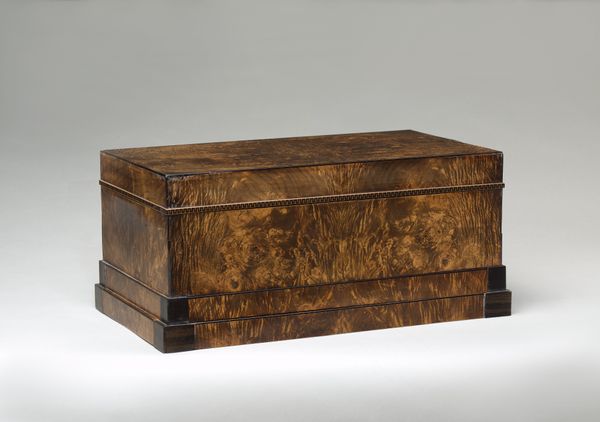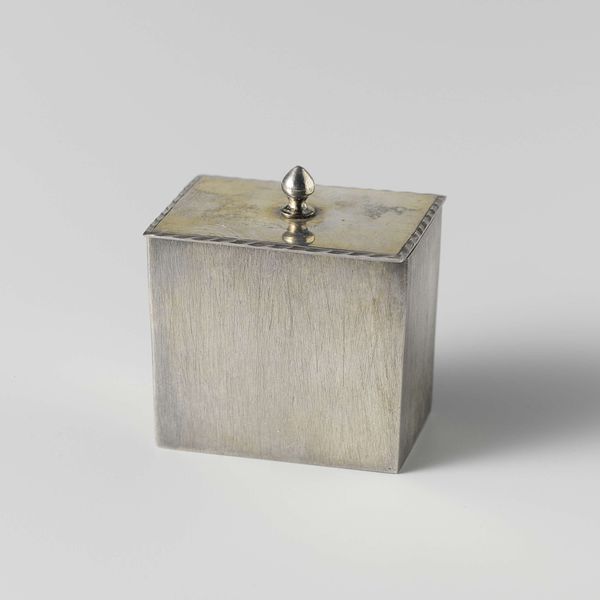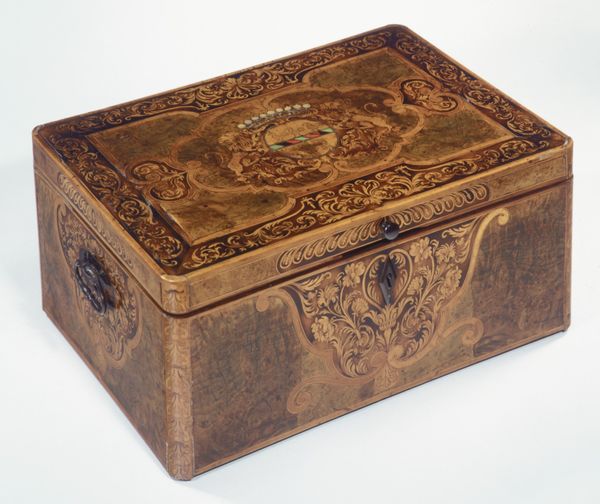
metal
#
metal
#
asian-art
#
landscape
#
orientalism
#
decorative-art
Dimensions: height 18.3 cm, width 22.8 cm, depth 27.4 cm
Copyright: Rijks Museum: Open Domain
This document box was created by Funabashi Shūmin using the labor-intensive Japanese lacquer technique known as maki-e. Maki-e involves sprinkling gold or silver powder onto wet lacquer to create a shimmering surface. Looking closely, you’ll see the intricate decoration of grasses and flowers. This wasn’t simply painted on; it was built up layer by layer with meticulous care, resulting in a raised, tactile quality. The process requires incredible patience and skill, and the result is far more than just decoration. Maki-e elevates a functional object into a work of art, blurring the lines between craft and fine art. The inherent value lies not only in the precious materials used, but also in the extensive labor required to produce such an object. Ultimately, this box prompts us to consider the value we place on handmade objects in a world of mass production, and to appreciate the cultural knowledge embedded within them.
Comments
rijksmuseum about 2 years ago
⋮
Although the motif of autumn grasses on this box is traditional, the style is very different from lacquerware produced before 1900. Instead of a stylized composition, the box bears what is almost a painting in lacquer, with tall cedars creating depth. The decoration has been executed in minute detail, using highly developed lacquer techniques. This extreme refinement is characteristic of lacquerware from the early 20th century.
Join the conversation
Join millions of artists and users on Artera today and experience the ultimate creative platform.



